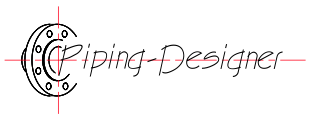Thrust Force for a Jet Engine
Thrust Force for a Jet Engine formula
|
||
|
\( F \;=\; \dot m_f \cdot \left( v_e - v_i \right) + \left( p_e - p_a \right) \cdot A_e \) (Thrust Force for a Jet Engine) \( \dot m_f \;=\; \dfrac{ F - \left( p_e - p_a \right) \cdot A_e }{ v_e - v_i } \) \( v_e \;=\; \dfrac{ F - \left( p_e - p_a \right) \cdot A_e }{ \dot m_f } + v_i\) \( v_i \;=\; v_e - \dfrac{ F - \left( p_e - p_a \right) \cdot A_e }{ \dot m_f } \) \( p_e \;=\; \dfrac{ F - \dot m_f \cdot \left( v_e - v_a \right) }{ A_e } + p_a \) \( p_a \;=\; \dfrac{ \dot m_f \cdot \left( v_e - v_i \right) + p_e \cdot A_e - F }{ A_e } \) \( A_e \;=\; \dfrac{ F - \dot m_f \cdot \left( v_e - v_i \right) }{ p_e - p_a } \) |
||
| Symbol | English | Metric |
| \( F \) = Thrust Force | \(lbf\) | \(N\) |
| \( \dot m_f \) = Mass Flow Rate of the Exaust | \(lbm \;/\; sec\) | \(kg \;/\; s\) |
| \( v_e \) = Exaust Velocity | \(ft \;/\; sec\) | \(m \;/\; s\) |
| \( v_i \) = Inlet Velocity | \(ft \;/\; sec\) | \(m \;/\; s\) |
| \( p_e \) = Exaust Pressure | \(lbf \;/\; in^2\) | \(Pa\) |
| \( p_a \) = Ambient Atmospheric Pressure | \(lbf \;/\; in^2\) | \(Pa\) |
| \( A_e \) = Exit Area of the Nozzle | \(in^2\) | \(mm^2\) |
Thrust force in a jet engine, abbreviated as \( F \), is the propulsive force generated to propel an aircraft forward, resulting from the acceleration of air or exhaust gases through the engine. It is a reaction force described by Newton’s third law of motion. In a jet engine, air is drawn into the engine, compressed, mixed with fuel, and ignited in the combustion chamber. The resulting high-pressure, high-velocity exhaust gases are expelled rearward through the engine's nozzle, creating a forward thrust force.
The magnitude of thrust depends on factors such as the mass flow rate of the air, the velocity of the exhaust gases, and the engine's design, including whether it is a turbojet, turbofan, or another type. For example, turbofan engines, commonly used in commercial airliners, produce additional thrust by accelerating a large volume of bypass air around the engine core. Thrust is typically measured in pounds or newtons and is critical for overcoming drag and enabling flight.
